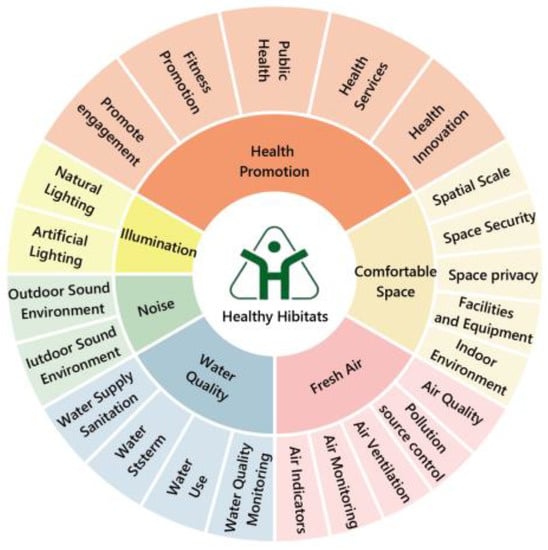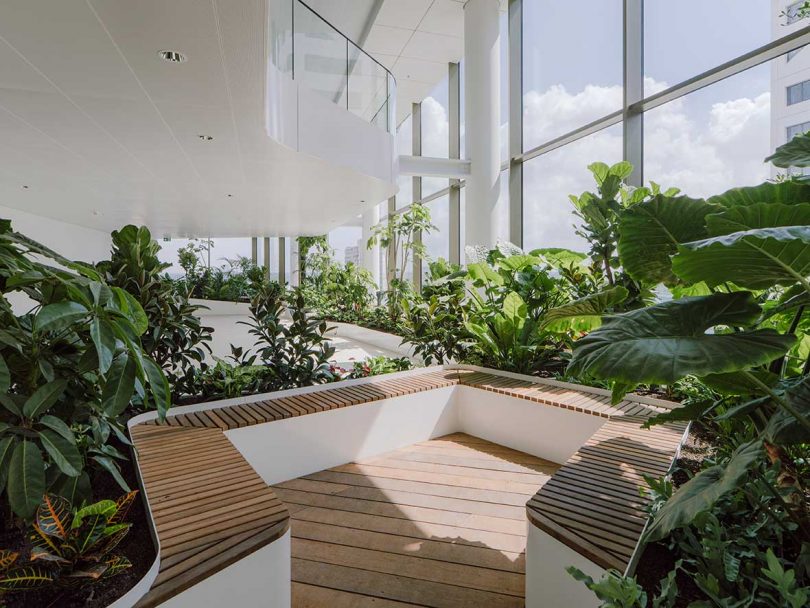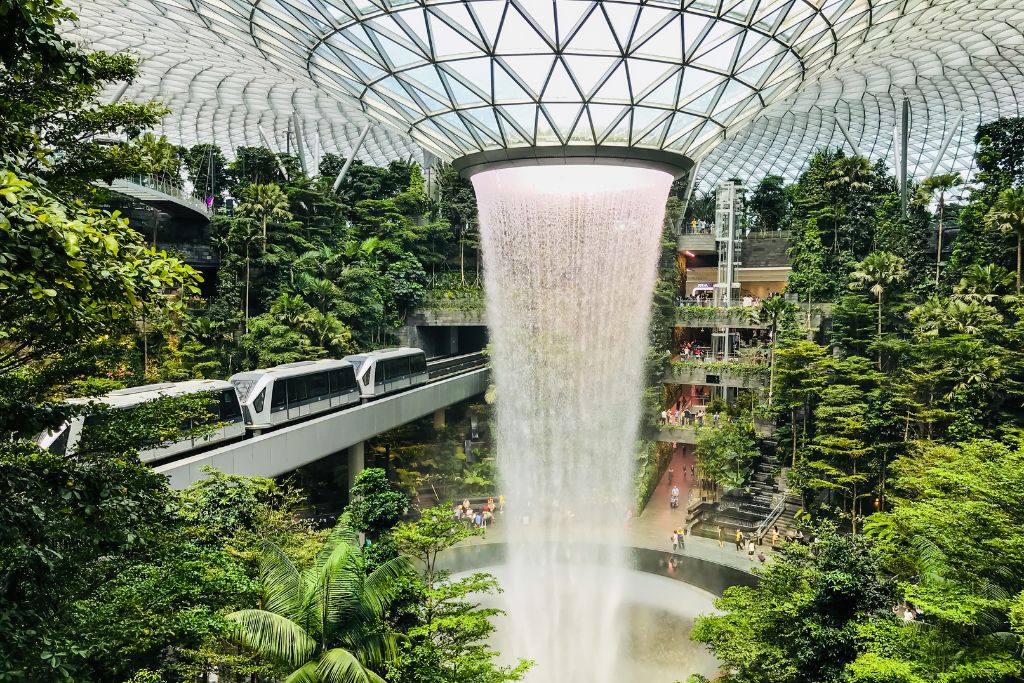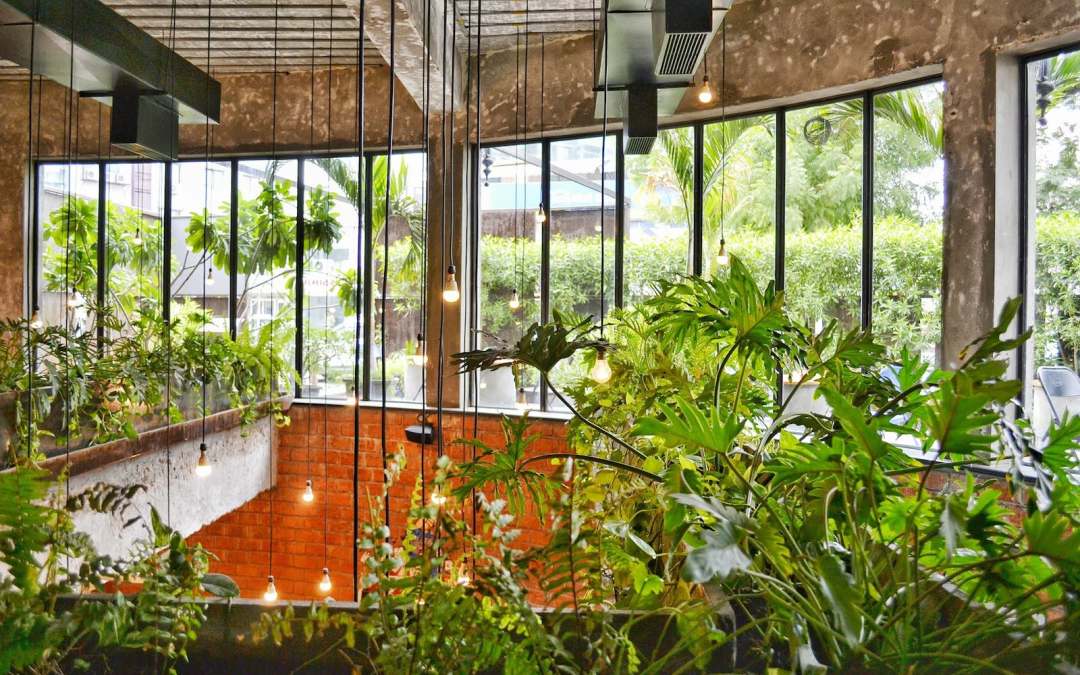How Biophilic Design Impacts Mental Health in Urban Environments.
In an increasingly urbanized world, the relationship between our environment and mental health, and the importance of biophilic design, has become increasingly significant.
Biophilic design, which emphasizes the incorporation of nature into built environments, presents a multitude of benefits that can enhance overall well-being and contribute to the creation of therapeutic landscapes.
By reducing stress and anxiety while simultaneously improving mood and cognitive function, the integration of natural elements such as plants, green spaces, and urban greenery within urban settings has the potential to significantly transform our living conditions and emotional states.
This article examines the influence of biophilic design on mental health, its advantages for urban environments, the challenges associated with its implementation, and strategies for incorporating these principles into urban planning and sustainable development.
It elucidates how fostering a deeper connection with nature and improving urban biodiversity can contribute to the development of healthier, more vibrant communities.
What Are the Benefits of Biophilic Design on Mental Health and Well-being?
.jpg_00.jpeg)
Biophilic design involves the integration of natural elements into architectural frameworks, thereby creating immersive environments that cultivate a profound connection to nature, which yields significant psychological benefits for mental health and enhances overall well-being.
In urban settings, where exposure to nature is frequently restricted, the incorporation of elements such as indoor plants, green spaces, and restorative environments can greatly enhance overall well-being, facilitate nature therapy, and improve quality of life.
Research within the field of environmental psychology indicates that biophilic design fosters emotional well-being by promoting social interaction and community cohesion while simultaneously reducing anxiety and stress levels.
By prioritizing the impact of nature on human health, it becomes possible to develop healing environments that bolster mental resilience, creativity, productivity, and overall psychological health.
1. Reduction of Stress and Anxiety
The integration of biophilic design principles has been shown to result in substantial reductions in stress, anxiety levels, and improvement in psychological health, as exposure to natural environments promotes psychological restoration and tranquility.
Research indicates that natural settings can lower cortisol levels, which are linked to stress, while simultaneously enhancing overall emotional well-being and promoting mindfulness. A study published in the Journal of Environmental Psychology revealed that individuals who spent time in green spaces reported a 27% increase in feelings of happiness.
By incorporating elements such as plants, water features, natural lighting, and green architecture into urban environments, cities can create spaces that encourage these calming effects and improve sensory experiences.
For instance, the High Line in New York City effectively combines native plantings with walking pathways, promoting both relaxation and social interaction. This innovative project has transformed an abandoned railway into a vibrant green corridor that positively impacts the mental health of its visitors and serves as a model of participatory design.
2. Improvement of Mood and Well-being
Biophilic design plays a crucial role in enhancing mood and overall emotional well-being by promoting exposure to nature, which is linked to mood improvement, positive psychological states, and the therapeutic benefits of nature immersion.
This design approach often integrates various biophilic elements, such as access to outdoor spaces, community gardens, and indoor gardens, thereby creating environments that encourage individuals to engage with nature and foster a stronger human-nature connection.
Research within the field of environmental psychology supports the premise that natural surroundings can significantly lower stress levels and increase feelings of happiness. For example, studies have demonstrated that spending time in green spaces can alleviate anxiety and depression, ultimately fostering a sense of belonging, social well-being, and community.
Additionally, the incorporation of features such as vibrant gardens and open-air spaces not only enhances the aesthetic appeal of urban environments but also promotes social interaction, thereby strengthening emotional resilience and social cohesion among residents.
3. Enhancement of Cognitive Function
The enhancement of cognitive function represents a significant advantage of biophilic design, as interactions with natural elements have been associated with improvements in creativity, productivity, and overall cognitive performance.
Research indicates that environments that integrate greenery, natural light, and organic materials can markedly enhance an individual’s capacity for creative thinking and effective problem-solving. For instance, numerous studies conducted in office settings have demonstrated that employees who work in environments abundant with plants, natural views, and nature-based design experience reduced stress levels and heightened job satisfaction, which subsequently contributes to a substantial increase in productivity.
Likewise, educational institutions that have embraced biophilic principles—such as the incorporation of classroom gardens and the maximization of natural daylight—have observed not only improved academic performance among students but also increased engagement, well-being, and enthusiasm for learning.
These findings emphasize the significant influence that natural elements can exert on cognitive outcomes and human health in both professional and educational settings.
4. Promotion of Physical Health
Promoting physical health is a fundamental component of biophilic design, as access to green spaces and urban greenery encourages outdoor activities that enhance overall wellness and contribute to healthy cities.
These thoughtfully designed environments integrate elements that not only provide aesthetic value but also facilitate active lifestyles and enhance urban resilience. For example, well-planned landscape architecture, which includes walking trails, parks, and community gardens, allows individuals to engage in physical activities such as jogging, cycling, or yoga.
Interactions with nature can significantly reduce stress levels and elevate overall mood, thereby contributing to improved health outcomes and a higher quality of life.
Many urban environments have embraced the concept of green roofs and walls, which not only enhance the aesthetic quality of the skyline but also create opportunities for residents to connect with nature on a daily basis. This connection fosters a healthier lifestyle through increased physical movement, sensory perception, and a variety of recreational options.
How Does Biophilic Design Impact Urban Environments and Urban Living?
Biophilic design has a significant impact on urban environments by incorporating natural elements into urban planning, thereby enhancing ecological balance and urban resilience, which ultimately contributes to the improved quality of life and overall livability for residents.
By prioritizing urban biodiversity and the development of green spaces, cities can establish restorative areas that promote community well-being, social cohesion, and environmental aesthetics.
Moreover, the integration of biophilic elements within urban ecosystems can enhance environmental health by improving air quality and mitigating the effects of urban heat. This demonstrates that nature-inspired design and nature-based solutions are crucial for achieving sustainable urban living.
1. Improvement of Air Quality and Environmental Health
.jpg_01.jpeg)
One of the most significant effects of biophilic design is the enhancement of air quality in urban environments, achieved through the integration of greenery, urban biodiversity conservation, and natural elements into architectural and urban planning.
Research indicates that urban vegetation, including trees and shrubs, plays a critical role in filtering pollutants and absorbing carbon dioxide, thereby reducing the overall concentration of harmful particles in the air. For instance, a study published in the journal “Environmental Science & Technology” demonstrated that increased tree cover in urban areas is associated with lower levels of airborne particulate matter, resulting in healthier living conditions and promoting public health.
Furthermore, biophilic elements not only improve aesthetic appeal but also promote well-being and social interactions. Findings have established a correlation between the presence of green spaces and reduced respiratory issues among urban residents, ultimately contributing to enhanced public health outcomes.
2. Mitigation of Noise Pollution
Mitigating noise pollution is a significant advantage of incorporating biophilic design within urban planning, as natural elements such as trees and green facades serve effectively as sound barriers and create healthier soundscapes.
By integrating these features into the urban landscape, cities can transform densely populated areas into serene environments that prioritize the well-being of their residents and contribute to improved psychological restoration.
Landscape architecture is instrumental in this endeavor; well-designed public parks, green walls, and urban gardens not only absorb sound but also create tranquil spaces where communities can convene, engage, and benefit from restorative justice practices.
These restorative environments play a crucial role in countering the auditory disturbances commonly associated with urban life, ultimately contributing to improved mental health, emotional well-being, and a stronger sense of community among residents.
Embracing biophilic principles fosters a harmonious relationship between nature and urban living, enhancing the overall quality of life and livability in metropolitan areas.
3. Reduction of Urban Heat Island Effect
Biophilic design is essential in mitigating the urban heat island effect, a phenomenon commonly observed in cities due to the prevalence of extensive concrete and asphalt surfaces, and improving overall urban sustainability.
By incorporating features such as green roofs, vertical gardens, and shaded walking paths, urban planners can create cooler microclimates that not only reduce surface and air temperatures but also enhance the overall aesthetic quality of urban environments and support urban wildlife.
Research shows that areas with increased vegetation can experience temperature reductions of up to 10 degrees Fahrenheit compared to barren areas. This transformation not only improves comfort for residents but also promotes biodiversity, supports local wildlife, and enhances urban ecological restoration.
The integration of green infrastructure carries significant ecological implications, fostering healthier urban ecosystems and contributing to climate resilience. This approach ultimately creates a more sustainable living environment for future generations, enhancing urban biodiversity and promoting psychological benefits.
4. Creation of Sustainable and Resilient Cities
The establishment of sustainable and resilient cities is significantly advanced by biophilic design, which employs nature-based solutions to tackle urban challenges and enhance livability, contributing to overall urban sustainability and human health.
By incorporating natural elements such as green roofs, parks, and urban forests into the urban framework, biophilic design not only enhances the aesthetic quality of neighborhoods but also promotes mental well-being, reduces stress, and encourages community interaction.
For example, cities like Singapore have embraced these design principles, transforming their concrete landscapes into verdant environments that enhance biodiversity, mitigate urban heat, and improve the overall quality of life for residents.
Similarly, New York City’s High Line serves as an exemplary model of how repurposing underutilized spaces into green corridors can strengthen social connections, improve environmental aesthetics, and address environmental concerns, thereby rendering urban areas both sustainable and vibrant, fostering cohesive communities.
What Are the Challenges of Implementing Biophilic Design in Urban Environments?
Despite its numerous benefits, the implementation of biophilic design in urban environments presents several challenges, including balancing aesthetics with functionality and integrating natural elements into existing urban frameworks.
These challenges include limited space and resources, as well as a lack of awareness and education among stakeholders about the psychological health benefits and restorative potential of nature-filled urban environments.
1. Limited Space and Resources
One of the primary challenges associated with the implementation of biophilic design is the limited space and resources available in densely populated urban areas. These constraints can significantly hinder the incorporation of natural elements, such as green walls, rooftop gardens, and water features, into the built environment, which are crucial for creating therapeutic landscapes and enhancing urban resilience.
Urban planners and architects frequently encounter the challenge of balancing the demands of functionality with the need for nature-infused spaces. Innovative solutions, such as vertical gardening systems and modular green infrastructure, can effectively address these limitations and promote ecological design.
By creatively utilizing small, underutilized spaces—such as repurposing vacant lots or integrating greenery into existing structures—it is possible to enhance urban living conditions while promoting overall well-being, mental health, and sustainability, even within stringent financial constraints.
2. Lack of Awareness and Education
.jpg_10.jpeg)
The lack of awareness and education regarding the benefits of biophilic design presents a significant challenge to its widespread implementation in urban environments, hindering opportunities to improve human-nature connections and overall psychological well-being.
When urban planners and architects neglect the principles of biophilic design, they forfeit the opportunity to enhance community well-being, reduce anxiety, and address pressing environmental issues.
It is essential to raise awareness among these professionals, as well as the general public, to foster a culture that prioritizes nature-based solutions, urban greenery, and sustainable development.
Engaging the community through workshops, interactive seminars, and public art projects can effectively demonstrate the transformative potential of integrating natural elements into urban spaces, fostering mindfulness, and enhancing social well-being.
By promoting educational initiatives that emphasize the psychological and ecological advantages of biophilic design, it is possible to cultivate a deeper appreciation for nature, ultimately leading to more sustainable and vibrant cities that serve both human and ecological needs, enhancing overall livability.
3. Resistance to Change
Resistance to change can significantly hinder the adoption of biophilic architecture and design principles in urban planning, as established community values and preferences frequently conflict with innovative approaches. This tension is particularly pronounced in contexts where historical precedents intersect with modern expectations for functionality and aesthetic appeal, impacting efforts to improve environmental health and urban ecology.
Many urban residents may prioritize practicality over the integration of natural elements, leading to hesitance regarding unfamiliar design features. Cultural attitudes towards public spaces and greenery can present substantial obstacles, especially in densely populated urban areas, where green spaces are limited.
To mitigate these barriers, education and awareness campaigns can play a crucial role in highlighting the advantages of biophilic design. Such initiatives can effectively demonstrate how nature-infused environments contribute to enhanced mental well-being, promote community interaction, reduce stress, and improve overall quality of life.
Moreover, engaging local stakeholders in the design process can facilitate a connection between traditional values and innovative practices, fostering a collaborative mindset toward embracing change and promoting urban resilience.
4. Balancing Aesthetics with Functionality
Striking a balance between aesthetics and functionality presents a significant challenge in biophilic design, as planners must ensure that natural elements enhance both the visual appeal and practical utility of urban spaces, contributing to overall well-being and urban sustainability.
This harmonious integration of nature into architectural settings not only enhances the environment’s beauty but also promotes the well-being, productivity, and emotional well-being of its inhabitants.
For example, the High Line in New York City serves as a prime illustration of this integration, transforming a former railway into a vibrant park featuring native plants and thoughtfully designed seating areas that encourage relaxation, foster social interaction, and enhance overall urban ecology.
Similarly, the Eden Project in the UK adeptly combines functionality with artistic landscapes, creating an immersive experience that showcases plant diversity, promotes biodiversity, and educates visitors on ecological sustainability.
Such projects exemplify how biophilic design can revitalize urban areas, fostering a deeper connection with nature, creating therapeutic landscapes, and offering spaces that provide both aesthetic enjoyment and practical usability.
How Can Biophilic Design Be Incorporated into Urban Planning and Development?
The integration of biophilic design into urban planning and development necessitates a collaborative approach among designers, city planners, and community stakeholders to enhance ecological restoration and urban biodiversity conservation.
This collaboration is essential to achieve sustainable outcomes that are advantageous for both individuals and the environment, promoting overall urban resilience and healthy cities.
1. Collaboration and Communication between Designers and City Planners
Effective collaboration and communication between designers and city planners are critical for the successful implementation of biophilic design in urban environments, ensuring that concepts such as urban resilience and psychological restoration are prioritized.
These interactions promote a deeper understanding of diverse perspectives, which is essential for addressing the complex challenges faced in urban settings. By engaging stakeholders from various disciplines—such as ecologists, architects, and community organizations—urban planners can develop spaces that not only enhance aesthetic appeal but also support the surrounding ecosystem, fostering urban wildlife and community engagement.
Implementing methods such as regular interdisciplinary workshops, collaborative digital platforms, and community forums can significantly improve transparency, trust, and the overall quality of life among the involved parties.
For example, the High Line in New York City serves as a compelling case study, demonstrating how effective collaboration can result in vibrant, green spaces by integrating environmental insights with urban revitalization strategies. This project exemplifies a successful model for future initiatives, promoting urban sustainability and the human-nature connection.
2. Incorporation of Biophilic Design Principles into Building Codes and Regulations
Incorporating biophilic design principles into building codes and regulations represents a crucial advancement in promoting sustainable urban development that emphasizes green infrastructure, urban sustainability, and the well-being of communities.
By establishing precise standards and guidelines, policymakers can effectively cultivate environments that enhance the connection between residents and nature. This may include mandates for green roofs, living walls, indoor gardens, and the utilization of natural materials in construction.
Encouraging designs that optimize natural light and ventilation can significantly improve indoor environments, thereby contributing to overall health, psychological benefits, and emotional well-being. Through proactive legislation and incentives, urban planners can advocate for projects that integrate natural elements, promoting a more harmonious relationship with the environment.
Ultimately, fostering collaboration among architects, developers, and local governance is essential for embedding these principles into the urban landscape, enhancing social interactions and overall urban resilience.
3. Public Education and Engagement
.jpg_11.jpeg)
Public education and engagement are essential for cultivating a comprehensive understanding of biophilic design and its advantages for community well-being, psychological health, and environmental psychology in urban settings.
To accomplish this, it is imperative to develop educational programs that emphasize the fundamental principles of biophilic design, illustrating how nature-inspired elements can improve both physical and mental health, reduce anxiety, and enhance overall happiness.
Community workshops can serve as interactive platforms where residents collaborate with experts, gaining insights on how to incorporate these concepts into their own environments, fostering urban biodiversity and ecological restoration.
Outreach initiatives can foster meaningful connections between designers and community members, ensuring that all voices are considered in the design process, promoting an outdoor lifestyle and participatory design.
By promoting collaboration and encouraging constructive feedback, communities can achieve inclusive design outcomes that reflect their unique needs and aspirations, ultimately resulting in healthier and more vibrant urban spaces, enhancing overall well-being.
4. Integration of Biophilic Design into Sustainable Development Goals
Integrating biophilic design into sustainable development goals is essential for promoting urban resilience, human-centered design, and achieving environmental sustainability.
The integration of biophilic design into sustainable development goals is crucial for the establishment of urban environments that prioritize ecological balance, enhance community resilience, and foster a strong human-nature connection.
By fostering a harmonious relationship between humans and nature, this approach not only improves mental and physical well-being but also encourages social interactions, promotes climate action, and sustainable resource management, contributing to overall happiness and quality of life.
For example, cities such as Singapore have successfully incorporated biophilic design principles in their urban planning, featuring green roofs, vertical gardens, and extensive urban forests that contribute to biodiversity, enhance urban ecosystems, and mitigate heat island effects.
Similarly, Melbourne’s implementation of green infrastructure, which includes parks, natural waterways, and urban agriculture, illustrates how thoughtful design can align with various sustainable development goals, such as clean water, sustainable cities, and urban biodiversity conservation.
These examples highlight the essential role of integrating biophilic elements into urban settings to support comprehensive development strategies, enhance environmental aesthetics, and promote psychological health in city living.
Frequently Asked Questions
1. What is biophilic design and how does it impact mental health and well-being in urban environments?
Biophilic design is an approach to architecture and interior design that aims to incorporate natural elements, such as light exposure and green spaces, into human-made spaces. It has been shown to have a positive impact on mental health in urban environments by promoting feelings of well-being and reducing stress, anxiety, and enhancing social well-being.
2. How does biophilic design improve mental health in urban environments?
Biophilic design has been found to improve mental health in urban environments in several ways. It can reduce stress levels, increase feelings of relaxation and calmness, and improve cognitive function through nature exposure. It can also improve air quality and soundscapes in urban spaces, which can have a positive impact on mental health and emotional well-being.
3. Can biophilic design be incorporated into existing urban environments?
Yes, biophilic design can be incorporated into existing urban environments through retrofitting and redesigning spaces. This can involve adding natural elements such as plants, water features, and natural lighting, as well as using materials and patterns that mimic nature, to create restorative environments and promote an outdoor lifestyle.
4. How does biophilic design benefit those with mental health issues in urban environments?
Biophilic design has been found to benefit those with mental health issues in urban environments by reducing symptoms of depression and anxiety, increasing positive emotions, and promoting overall well-being. It can also create a sense of connection to nature, enhancing psychological restoration and providing therapeutic landscapes for those struggling with mental health.
5. Are there any studies that support the positive impact of biophilic design on mental health in urban environments?
Yes, there have been numerous studies that have shown the positive impact of biophilic design on mental health in urban environments. These studies have found that biophilic design can improve mood, reduce stress levels, enhance sensory experiences, and increase cognitive function in urban dwellers.
6. Can biophilic design be implemented in all types of urban environments?
Yes, biophilic design can be implemented in all types of urban environments, including residential, commercial, and public spaces. It can be adapted to suit different styles and budgets, making it a versatile approach to design that can benefit all types of urban dwellers, enhancing their connection to nature and promoting livability and social well-being.

I’m Bruno, an architect with a deep passion for Biophilic Design in Urban Architecture. Throughout my career, I’ve focused on integrating natural elements into urban planning, and I created this site to share my insights and foster a deeper understanding of how biophilic principles can significantly enhance urban living. Dedicated to sustainable development, I continually explore innovative design solutions that promote both environmental and human well-being in city landscapes.














Publicar comentário